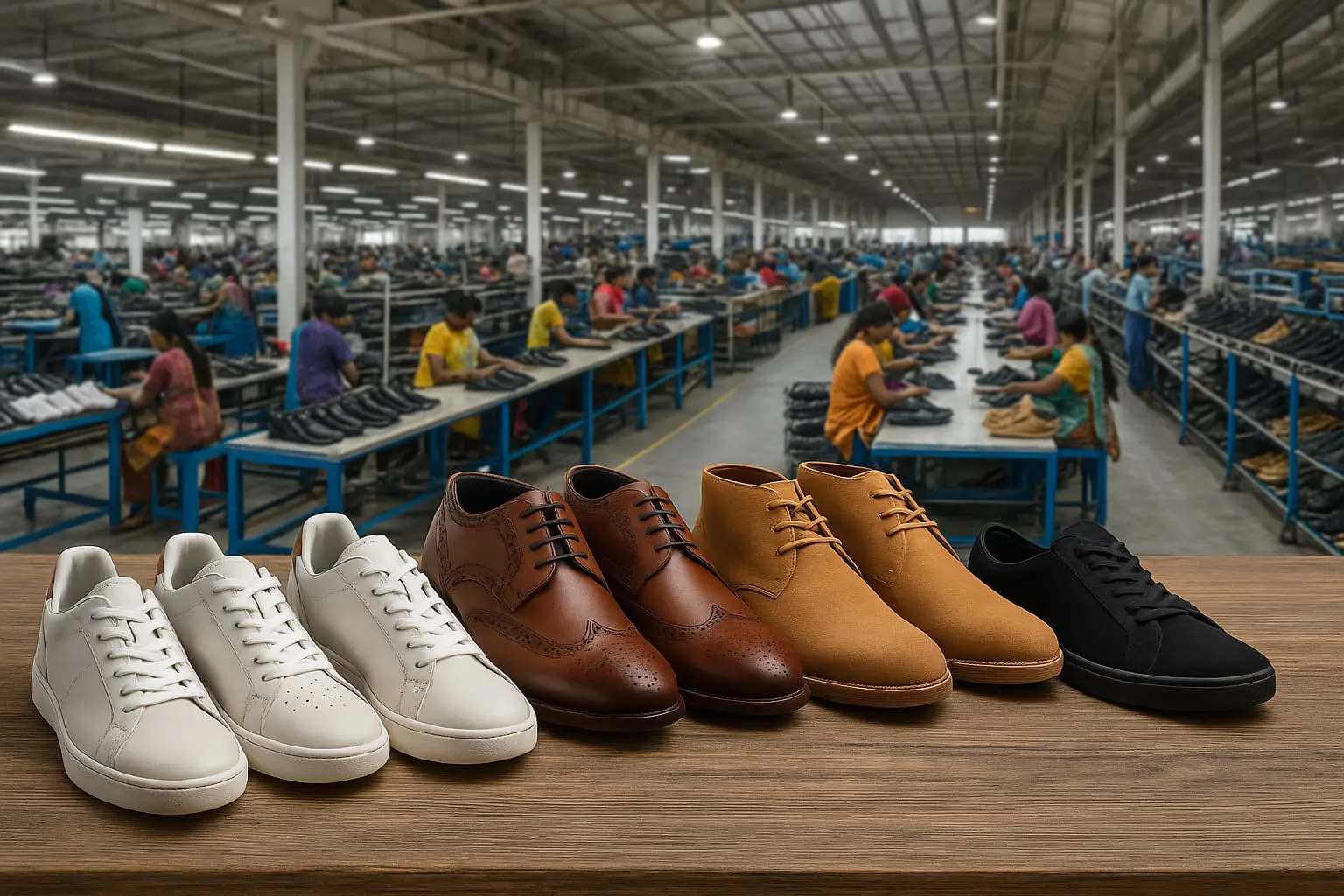The footwear industry is one of the fastest-moving sectors in global manufacturing, valued at over $450 billion in 2025. From fashion sneakers to industrial safety boots, the market demands speed, precision, and sustainability.
But behind every stylish pair of shoes is a complex manufacturing process — one that often faces obstacles such as inconsistent quality, high wastage, and labor shortages.
This is where advanced footwear making machines come in. For decades, BSM India, a leading Footwear Making Machine Manufacturer, has helped brands overcome these exact challenges with cutting-edge automation and smart production technologies.
In this in-depth guide, we break down five major challenges in footwear manufacturing — and how modern machines can solve them efficiently.
Challenge 1: Inconsistent Quality in Large Batches
The Problem:
When producing thousands of pairs of shoes, maintaining consistent stitching, cutting, and assembly is critical. Even small variations in sole alignment, upper stitching, or adhesive application can damage brand reputation. In 2023, a major sports brand recalled 20,000 pairs of sneakers due to defective toe caps — costing millions in returns and lost trust.
Why It Happens:
- Manual cutting and stitching are prone to human error.
- Quality control often happens at the end, instead of during production.
- Limited use of precision measuring tools.
How Modern Machines Solve It:
- CNC Cutting Machines deliver exact, repeatable patterns.
- Robotic Stitching Arms ensure perfect seam alignment every time.
- AI-Powered Defect Detection identifies flaws mid-production, reducing waste.
Real Example:
A BSM India client in the UAE upgraded from manual stitching to an automated unit. Quality consistency improved from 87% to 99.5%, with near-zero defect-related returns.
Challenge 2: High Material Wastage
The Problem:
Leather, synthetic fabrics, and vegan alternatives are costly. In traditional production, up to 25% of raw material can be wasted due to inefficient cutting and human inaccuracy.
Why It Happens:
- No nesting optimization in pattern cutting.
- Overestimation of allowances.
- Damaged material due to incorrect handling.
How Modern Machines Solve It:
- Automated Nesting Software arranges patterns for maximum efficiency.
- Laser and die-cutting machines reduce offcuts.
- Integrated fabric inspection systems detect defects before cutting.
Real Example:
An Indian footwear exporter working with BSM India reduced leather wastage by 22% annually, saving nearly ₹18 lakhs in raw material costs.
Challenge 3: Slow Turnaround Time
The Problem:
In a fast-fashion market, delays mean missed opportunities. Brands often need new styles produced in weeks, not months. Manual processes and outdated machines make it hard to keep up.
Why It Happens:
- Sequential workflows slow down assembly.
- Lack of multi-functional equipment.
- Bottlenecks in specific production stages.
How Modern Machines Solve It:
- Multi-Station Machines combine cutting, stitching, and pressing in one workflow.
- Automated Conveyor Systems speed up assembly lines.
- Digital scheduling software optimizes machine allocation.
Real Example:
BSM India helped a sports shoe factory fulfill an urgent 10,000-pair order in just 12 days using high-speed multi-functional machines — without sacrificing quality.
Challenge 4: Skilled Labor Shortage
The Problem:
Finding highly skilled shoemakers is increasingly difficult, especially as younger generations move away from manual manufacturing jobs. Training takes months, and turnover rates are high.
Why It Happens:
- Decline in artisanal shoemaking skills.
- Lack of training infrastructure.
- Rural factories struggle to attract talent.
How Modern Machines Solve It:
- User-Friendly Interfaces allow semi-skilled workers to operate complex machines.
- Automated functions reduce reliance on manual expertise.
- Built-in tutorials and digital controls simplify learning.
Real Example:
A rural footwear unit using BSM India’s machines trained a team of fresh hires in just two weeks — a process that used to take over three months.
Challenge 5: Meeting Sustainability Goals
The Problem:
Footwear manufacturing is under pressure to reduce environmental impact. Consumers demand eco-friendly products, while governments enforce stricter sustainability regulations.
Why It Happens:
- High energy consumption in outdated machinery.
- Excessive material waste.
- Lack of recycling systems for production scraps.
How Modern Machines Solve It:
- Energy-Efficient Motors cut electricity usage by up to 30%.
- Precision cutting reduces waste.
- Machines compatible with recycled and alternative materials.
Real Example: (H3)
One BSM India client reduced CO₂ emissions by 18% and qualified for green manufacturing certifications after upgrading to energy-efficient units.
Future of Footwear Manufacturing
The next decade will see:
- AI-Powered Production Planning for predictive demand.
- Lights-Out Factories that run entirely automated.
- 3D-Printed Components for customized footwear.
BSM India is already investing in these technologies to help clients stay ahead of the curve.
How to Choose the Right Footwear Making Machine Manufacturer (H2)
Look for:
- Proven track record & industry experience.
- Customization options for your specific shoe type.
- Global certifications (CE, ISO, etc.).
- Strong after-sales service and training support.
Conclusion
Footwear manufacturing is evolving fast, and challenges like inconsistent quality, high wastage, delays, labor shortages, and sustainability demands can make or break a brand.
By partnering with an innovative Footwear Making Machine Manufacturer like BSM India, you can turn these challenges into opportunities — delivering shoes that meet the highest standards of quality, efficiency, and environmental responsibility.
Contact BSM India today to explore how our advanced machines can transform your production line.



